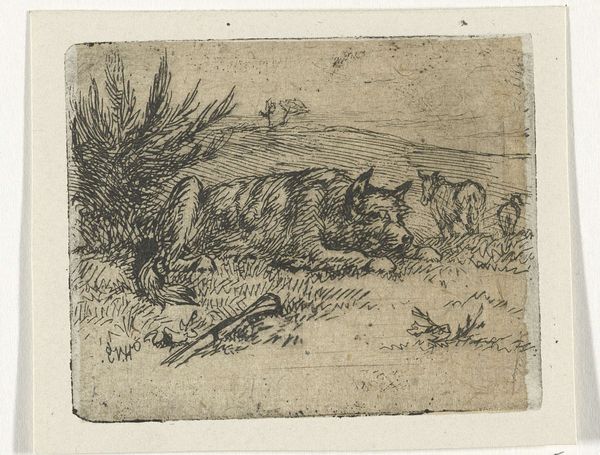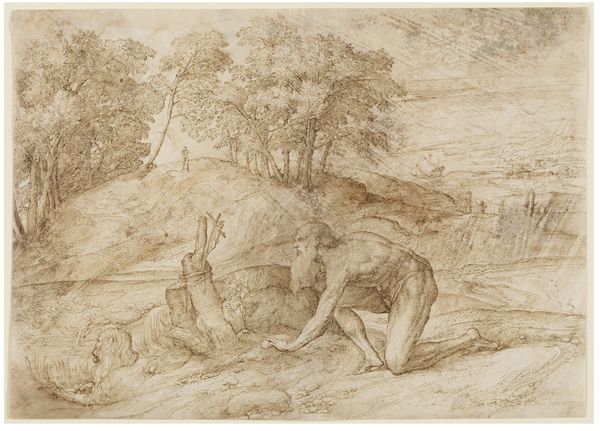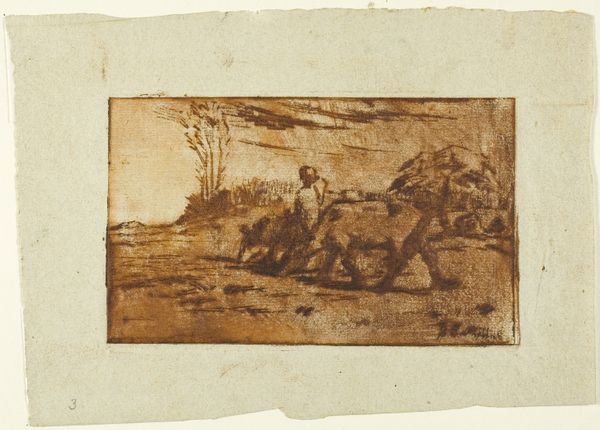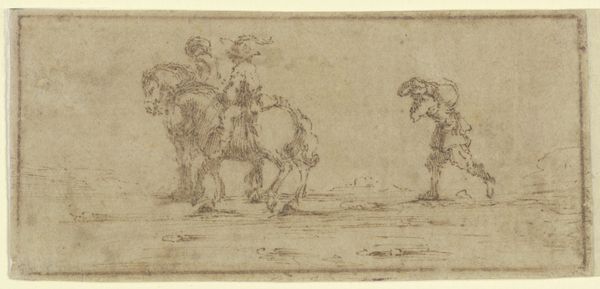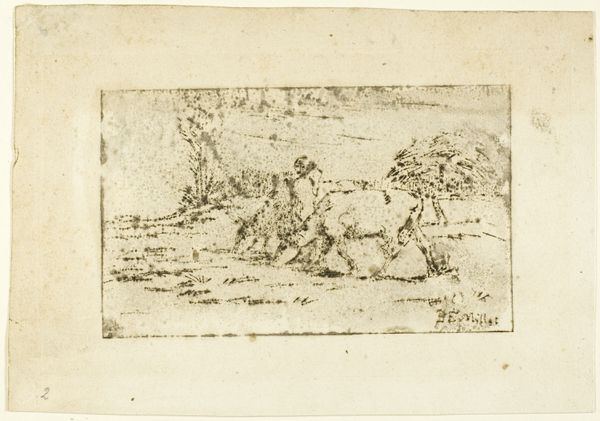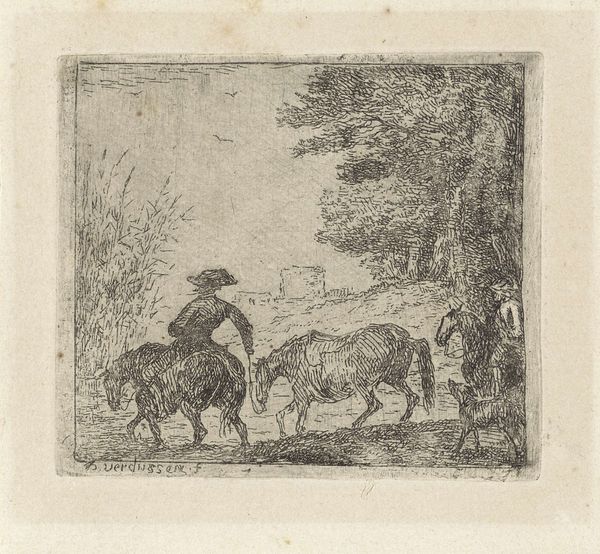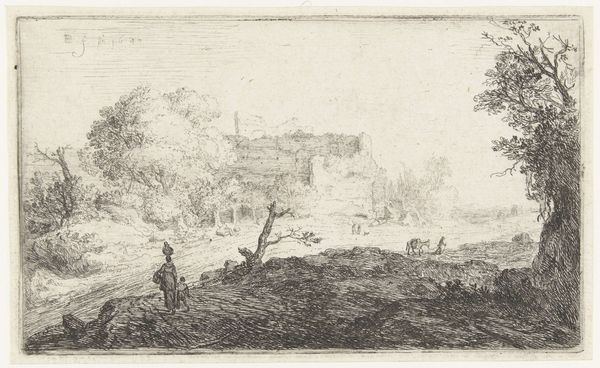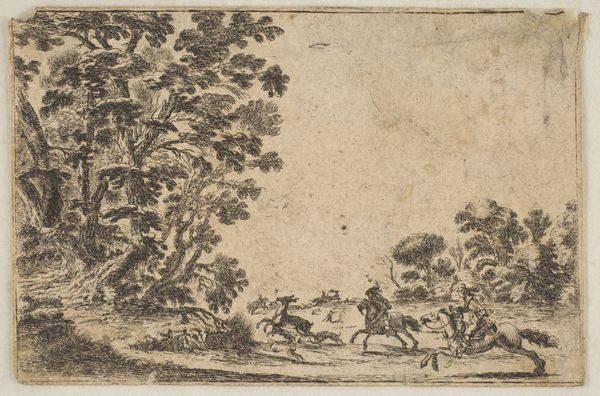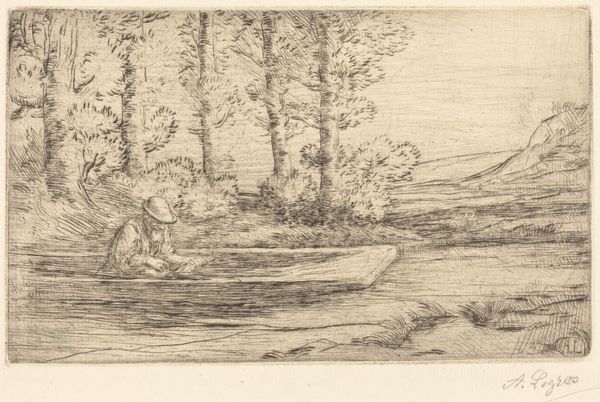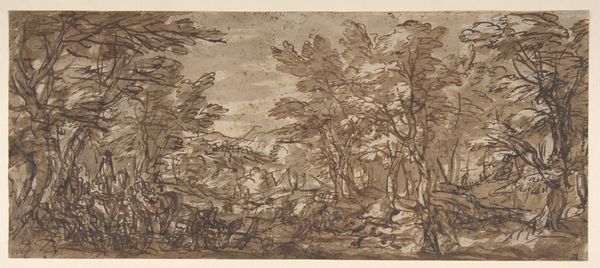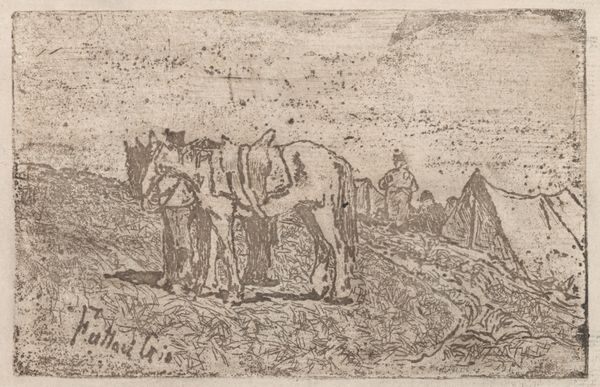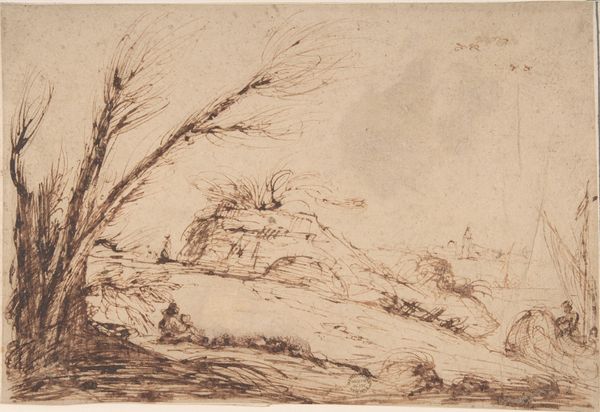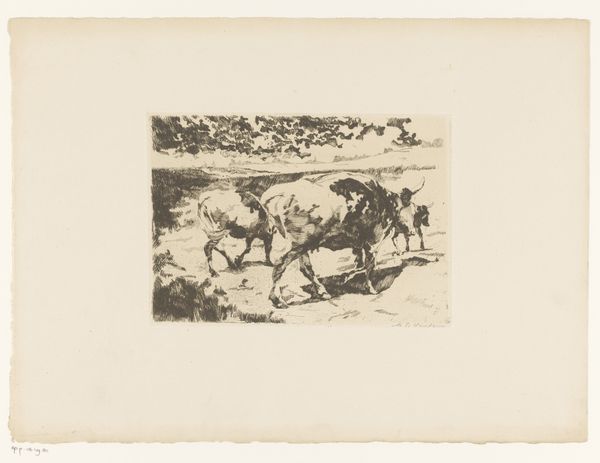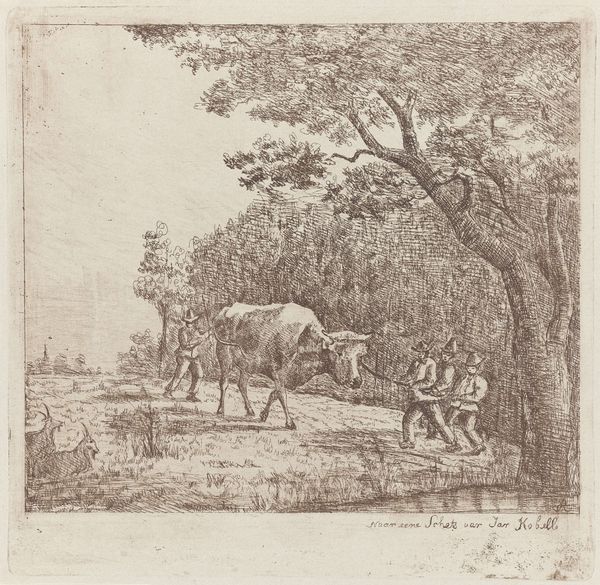
drawing, print, etching, paper
#
drawing
# print
#
etching
#
landscape
#
etching
#
paper
#
genre-painting
#
realism
Dimensions: 91 × 153 mm (image); 142 × 227 mm (sheet)
Copyright: Public Domain
Curator: Here we have Jean-François Millet's etching, "The Two Cows," dating back to around 1847, held within the Art Institute of Chicago's collection. Editor: The overall tone feels rather somber, wouldn't you say? The muted colors and coarse lines create a landscape weighed down with labor and a quiet simplicity. Curator: Millet often employed animals to symbolize labor and the realities of rural life. Here, the cows might signify sustenance, a symbol deeply ingrained in agrarian societies. Consider the sacred status of cows in various cultures - a connection to mother earth and providence. Editor: Absolutely, it’s important to recognize Millet’s position at the forefront of the Realist movement. We should reflect on how "The Two Cows" serves as both an idyllic portrait and a quiet comment on the hard life of rural populations, particularly during the mid-19th century's socio-economic shifts in France. Etchings such as this were also widely distributed to appeal to an urban audience increasingly romanticizing the countryside. Curator: Yes, the distribution of such prints brings to light the cultural memory embedded within these images. Notice Millet’s style—the deliberate ruggedness? It's a far cry from the idealized pastoral scenes that were fashionable. It connects the viewer to a world far beyond parlor games and drawing-room dalliances. This etching seems to tap into archetypes – perhaps an eternal cycle of sustenance and hardship. Editor: I wonder how its accessibility as a print affects its reception and status. Did the possibility of owning such a work—however widely produced—change how art was consumed by a burgeoning middle class? It certainly democratized the experience of landscape art and genre painting to some degree, pushing art beyond the confines of the elite salon. Curator: I agree. It brings forth critical ideas of authenticity, perhaps? The democratization you mentioned—does it deepen or dilute the imagery's impact? That's something we could debate all day, no? Editor: It is! I find this humble artwork speaks volumes about the political agency latent within these commonplace portrayals, challenging romantic and idealized visions of landscape. It makes me question how imagery contributes to our social consciousness. Curator: A fascinating exchange, and that little landscape is more stimulating than its size might indicate at first viewing. Editor: A somber yet thought-provoking slice of rural life indeed, prompting reflection on labor, societal structures, and the democratizing power of art.
Comments
No comments
Be the first to comment and join the conversation on the ultimate creative platform.
